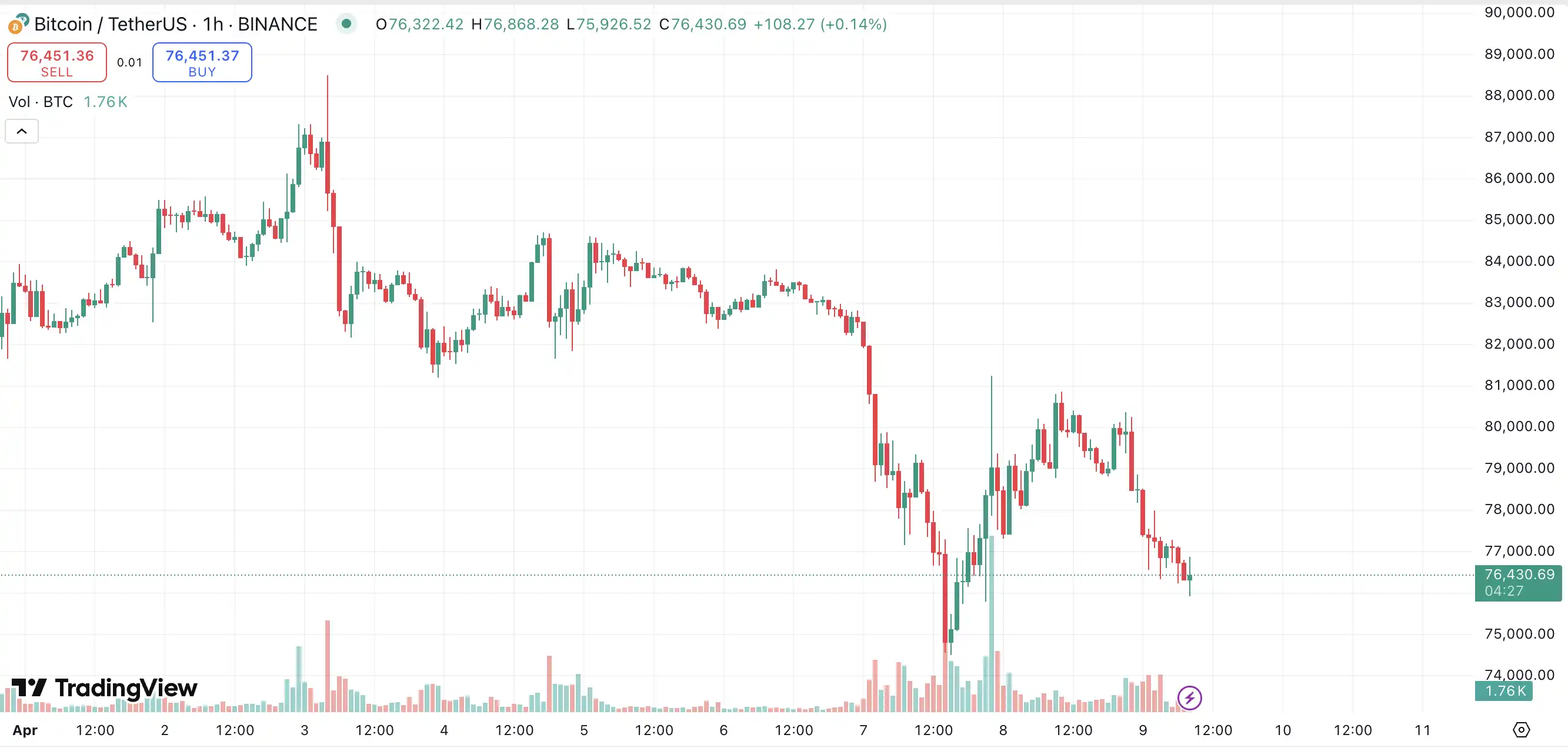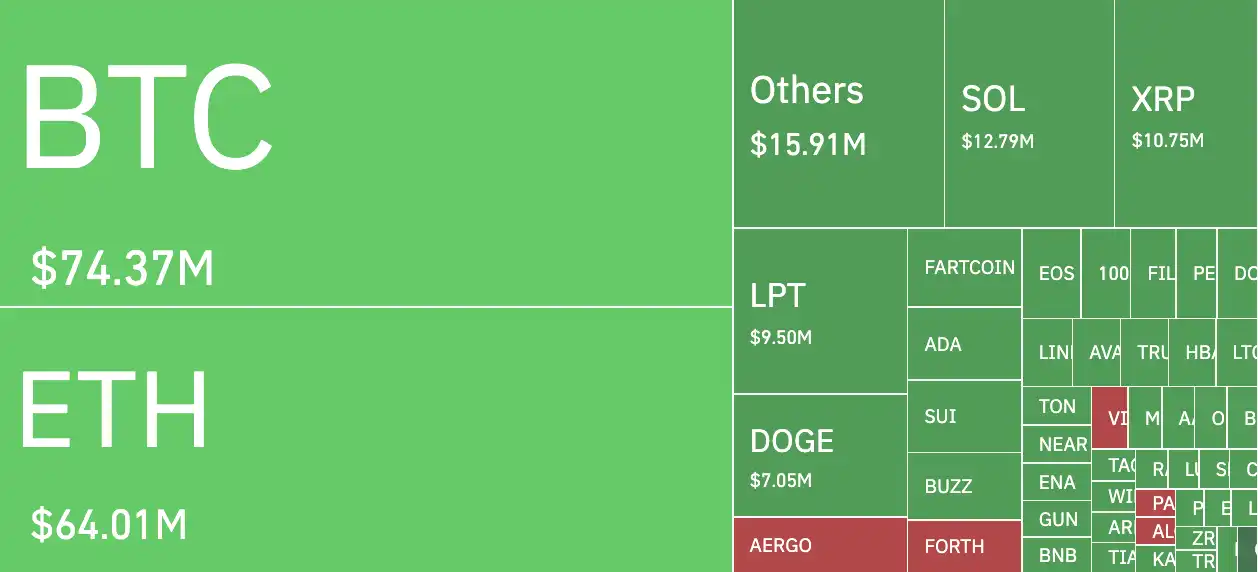Buy the dips failed, and the market did not receive good news. Early this morning, the White House Press Secretary stated that the additional 104% tariff on China has taken effect at Eastern Time noon, causing global financial markets to plummet again.
On April 3rd, when Trump's tariff policy was introduced, the US Treasury Secretary Bezos had suggested that no country should take retaliatory actions and wait until April 9th to see if any negotiations would occur. There was even another "fake news" drama, hoping that Trump might be willing to negotiate trade barriers on multiple countries and specific products, leading to a rebound that would temporarily revive the global capital market.
However, after days of gaming, the market did not receive good news. From 10% at the beginning of the year to 20% in March, and then to 34% in early April, now with a 50% "retaliatory escalation", the trade friction between China and the US has escalated into an "economic nuclear war".
With China and the US fighting a trade war again, can the stock market hold up?
Since the Trump administration announced a new round of tariff policies last week, international capital markets have experienced severe shocks, with the US stock market being the first to be hit. As of the close of trading this Tuesday, the S&P 500 index broke below 5000 points for the first time in nearly a year, falling 18.9% from its high on February 19th, just a step away from the "technical bear market" threshold of a 20% decline. Calculations show that the market value of S&P 500 index components evaporated by $5.8 trillion in four trading days, creating the most severe four-day consecutive decline since the index was established in the 1950s.

Meanwhile, the US tariff policy has triggered a chain reaction in global capital markets. Bloomberg statistics show that since Trump proposed "reciprocal tariffs" on April 3rd, the total market value of global stocks has shrunk by $10 trillion, slightly more than half of the EU's GDP. US tech giants have been hit hard, with the market value of seven major tech companies, including Apple and Microsoft, evaporating by $1.65 trillion, of which Apple's stock price plummeted nearly 23% in four days due to its high dependence on overseas supply chains, creating the largest single-week decline since the outbreak of the pandemic in 2020.
Previously, many opinion leaders in the crypto circle believed that crypto assets would not be affected by traditional tariffs because their transactions do not require crossing borders or customs. They argued that in an era of new mercantilism and trade barriers, the value proposition of cryptocurrencies becomes even more prominent. Strategy founder Michael Saylor wrote on April 3rd, "Bitcoin has no tariffs."
However, the total market value of cryptocurrencies has fallen 35% from its peak in December 2024, dropping from $3.9 trillion to $2.5 trillion. The "Crypto Fear and Greed Index" shows 17, indicating an extremely panicked market sentiment.
Last night, Bitcoin once again fell below $75,000, while BTC's market dominance continued to rise. The Altcoin market was miserable, and Ethereum fell below $1,400 again.

In the past 12 hours, the crypto market liquidated a total of $243 million, with long positions liquidating $192 million and short positions liquidating $51.03 million.

The continuous decline of Bitcoin prices may even force Strategy, which has been constantly buying, to sell Bitcoin. According to the 8-K form submitted by Strategy to the SEC on April 7th, if Bitcoin prices continue to fall, Strategy may be forced to sell its Bitcoin holdings to repay debt, breaking Michael Saylor's promise to "never sell Bitcoin".
Since Trump won the election in November 2024, Strategy has bought 275,965 BTC at an average price of $93,228 (worth $25.73 billion), and this portion has already suffered an unrealized loss of $4.6 billion.
With pessimistic expectations intensifying, how do analysts view the current market?
[The translation continues in the same manner for the rest of the text.]In the cryptocurrency sector, the recent structural decline in active developers might be the most concerning issue. In the previous cycle, we could observe developer activity and feel reassured, because we knew our industry was still benefiting from long-term tailwinds. Fast forward 2-3 years later, we not only haven't produced anything particularly interesting or important, but the future prospects are even worse than before.
In the previous cycle, we were looking forward to the launch of ETFs and a better regulatory environment under government leadership supporting cryptocurrencies, as a glimmer of hope at the end of the tunnel. Now that these have been realized, they (once again) failed to meet expectations, and I cannot see anything in the future that could help cryptocurrencies escape its inherent "Ouroboros" (self-cyclical, self-consuming dilemma).
From a more macro perspective, the world situation is currently in an unprecedented major transformation. Billionaire hedge fund manager and Bridgewater founder Ray Dalio wrote that while the market and economic focus on tariffs is important, deeper global issues should not be overlooked. He pointed out that we are in the "classic collapse" stage of monetary, political, and geopolitical order, a situation that might occur only once in a lifetime, but has appeared multiple times in history.
Dalio suggested not being distracted by short-term events like tariffs, but instead focusing on the interaction of five forces (economic, political, geopolitical, natural, and technological). Studying similar cycles in history (such as monetary crises) can help predict the future.
"The current changes are part of a historic major cycle, and tariffs are just a surface phenomenon. The real driving factors are the structural collapse of monetary, political, and geopolitical order. Understanding the interaction of these forces and learning from historical experiences is key to better facing the future."








